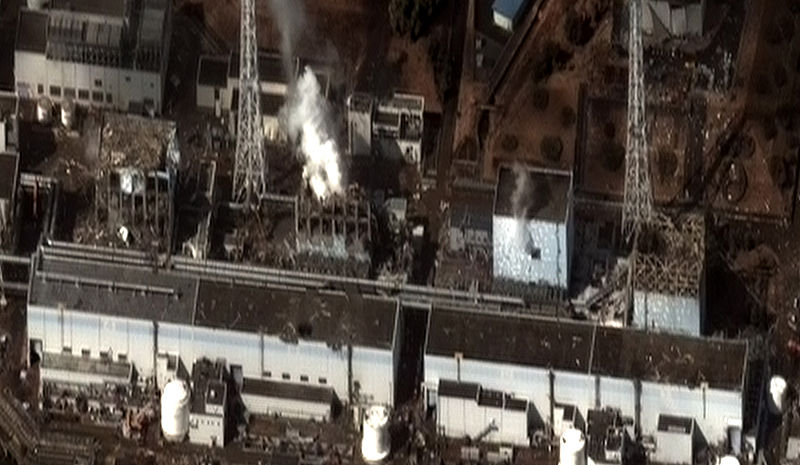 On August 8, a nuclear accident occurred at a Russian weapons testing site near the village of Nyonoksa, located on the shores of the White Sea. Five people were initially killed and three to six injured in what Russian officials called a failed test of an “isotope power source for a liquid-fueled rocket engine,” causing radiation levels in the city of Severodvinsk, 47 kilometers (29 mi) east of the test site, to peak at 4-16 times normal levels. Moscow has remained tight-lipped about the details of the accident, including what sort of weapon was involved, although Western experts believe it involved a nuclear-propelled missile being developed by the Russian military, and in light of recent clues that have been uncovered, nuclear experts are certain that the accident involved a nuclear fission reactor.
On August 8, a nuclear accident occurred at a Russian weapons testing site near the village of Nyonoksa, located on the shores of the White Sea. Five people were initially killed and three to six injured in what Russian officials called a failed test of an “isotope power source for a liquid-fueled rocket engine,” causing radiation levels in the city of Severodvinsk, 47 kilometers (29 mi) east of the test site, to peak at 4-16 times normal levels. Moscow has remained tight-lipped about the details of the accident, including what sort of weapon was involved, although Western experts believe it involved a nuclear-propelled missile being developed by the Russian military, and in light of recent clues that have been uncovered, nuclear experts are certain that the accident involved a nuclear fission reactor.
On August 26, Russia’s Roshydromet national weather and environmental monitoring agency released a statement saying that a number of short-lived radioactive isotopes were detected coming from the test site—specifically, strontium-91, barium-139, barium-140, and lanthanum-140—all of which have half-lives that range from 83 minutes to 12.8 days, in the Myshega River within the Aleksin city of the Tula Region between August 10 and 23. Despite the implication made in the official statement that the weapon involved in the accident uses a propulsion system that would simply be powered by the heat generated by the decay of radioactive isotopes, such as plutonium-238, such a generator would not produce the shorter-lived isotopes reported by Roshydromet, but rather by the fission processes that power a nuclear reactor.
“These are fission products,” according to Joshua Pollack, a leading expert on nuclear and missile proliferation with the James Martin Center for Nonproliferation Studies. “If anyone still doubts that a nuclear reactor was involved in this incident, this report should go a long way toward resolving that,” Pollack said, referring to the report from Roshydromet.
The conclusion that a nuclear reactor was involved, specifically one that uses uranium-235 for fuel, was echoed by numerous other experts. “It certainly does appear now that with reports of the detection of some radioactive fission products (Sr-91, Ba-139, Ba-140) the Nyonoksa explosion involved a critical nuclear reactor,” Edwin Lyman, an expert with the Union of Concerned Scientists, explained in an August 26 Tweet. “More information is needed before conclusions about the type of reactor can be reached.”
Reportedly, two of the individuals injured in the accident died while en route from Arkhangelsk Regional Hospital to treatment in Moscow. Medical staff in Arkhangelsk were not warned ahead of time that the patients had been exposed to radiation, resulting in several staff members being flown to Moscow for radiation testing. At least one doctor tested positive for radioactive Cesium-137 in his muscle tissue, although officials told him that he had eaten “Fukushima crabs” during a visit to Thailand. The medical staff involved were forced to sign a non-disclosure agreement that declared that any information regarding the incident was considered a state secret.
Western experts believe that the accident involved a nuclear-powered cruise missile called the 9M730 Burevestnik, known in the west by its NATO reporting name, SSC-X-9 Skyfall. Announced in March 2018, the missile would have virtually unlimited range and would be able to fly under the United State’s Strategic Defense Initiative (SDI) anti-ballistic missile system. Unlike other long-range cruise missiles, a nuclear-powered vehicle would be able to sustain supersonic speeds, making it harder for opposing forces to intercept.
The 450 residents of Nyonoksa are periodically evacuated during military tests, but at least one resident says that given the danger the recent incident imposes on the region, the villagers may not come back.
“This is a planned event. This happens regularly with us, about once a month everyone is taken away from the village,” the resident explains of the monthly evacuations in an interview with the 29.RU news agency. “Before, however, some remained here. But now, after the latest events, I think everyone will leave.”
Subscribers, to watch the subscriber version of the video, first log in then click on Dreamland Subscriber-Only Video Podcast link.